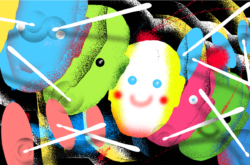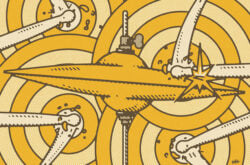Based in Hamburg, Germany, Steinberg has been creating powerful, flexible, and easy-to-use tools for decades.
From their widely-used DAW Cubase to the VST plugin format itself, they enable musicians, producers, sound designers, and even the tech behind audio production itself.
Steinberg also builds on this pedigree with a range of plugins, including their innovative drum sample designer Backbone, now available via Splice Rent-to-Own. Backbone allows you to layer up to eight samples and shape them, decompose them into tonal and noise elements, or re-synthesize them in new ways. You can apply up to eight effects with two fully routable buses, all within a slick, fast interface.

In this tutorial, we’ll walk through all of the major sections and features of the plugin, showing you how to add new layers, split and generate new layers with DrumGAN and Decompose, edit and re-synthesize layers with the five editing modules, and export your new layered sample.
Adding layers to Backbone
Backbone primarily works on the idea of layering several samples, and then editing each layer to create one, cohesive sample. You can select from a wide variety of general presets, but the beauty of Backbone is getting deep into layering and designing your ideal sample.
The left side of the GUI holds up to eight drum layers, and there are a few ways to fill each layer.

First, you can click the + button in the Layers section, which opens a browser to pick from a wide collection of factory samples. You can also view this browser by clicking the Load tab at the top of the plugin. You can also simply drag a sample into the layer from your session, your system file browser, or even the Splice Desktop app.
You can adjust the mute / solo status of each layer, and you can easily reset mutes and solos with the buttons above the layers section.
Generating, creating variations, and splitting drum layers with DrumGAN and Decompose
At the top of the plugin, you’ll see the two options DrumGAN and Decompose, which allow for deep manipulation of the selected layer.
DrumGAN

DrumGAN is an AI-powered drum sample generator developed by Sony CSL that can generate and manipulate a layer using three sliders, emphasizing the kick-like, snare-like, and cymbal-like aspects of the selected layer.
To create a new layer using DrumGAN, select an existing layer (empty or already loaded with a sample) and click the New button. This will overwrite the existing sample in this layer with a synthesized drum sound, determined by these three sliders. You can also click the Analyze button to have DrumGAN use the sample in the selected layer as a target when synthesizing a new drum sound. It won’t perfectly match the original sample, but doing this will allow you to use one of the more powerful features in DrumGAN: the Variation slider.
By selecting different “variation depths” (the further to the right, the more different the new variation), DrumGAN will subtly manipulate the sample while maintaining the same general feel. This is perfect for quickly finding a new tone for a layer. Or, it can even be used to create wide samples by duplicating a layer, hard-left and hard-right panning the two layers, and creating a slight variation on one side.
Decompose

One of Backbone’s unique features is its ability to split a sample into tonal and noise parts with the Decompose function. The most common reason to use this is for pitching drum samples. In most cases, we really only want to pitch the tonal body of the drum here. When pitching a sample through conventional means, the noise-based impact of the transient is also pitched, often unnecessarily changing the character of that transient.
By decomposing the tonal and noise parts of a layer, not only can you separately manipulate them using all of Backbone’s tools, but you can also choose to only pitch the tonal layer, maintaining impact in the overall drum sound by preserving the noise layer.
Engage Decompose mode by clicking the Decompose button while you’ve got the to-be-split layer selected. For ease of use, we suggest toggling the Prelisten button on, starting the processing, and letting yourself hear the changes you make.
First, use the solo buttons next to the Tonal and Noise knobs to focus on one part of the sample. You can then use the Sensitivity, Cutoff, and Duration knobs to further isolate the tonal and noise parts, with the goal being to have only a rounded body and punchy noise part be audible when they’re each soloed.
Then, either click Apply to export each into their own layers or engage the Mix button between the Tonal and Noise knobs before doing so to export the resulting mix into one layer.
Editing a layer with the Sample Editor, Resynth, Pitch, Filter, and Amp modules

Once you’ve added and generated layers, it’s time to start editing them to create your desired sound. Backbone provides a range of tools to help you do this: the Sample Editor, Resynth, Pitch, Filter, and an Amp envelope.
Apart from the Sample Editor, you can access all the most important controls from the overview panel, or you can click on each module’s title bar to open up more detailed views. Click the title bar again when in the detailed views to re-view the overview panel.
Sample Editor

A drum designer wouldn’t be complete without a sample editor. In addition to setting sample start and end times, fades, and loops, you can use the controls to the left of the waveform viewer to reverse the sample, apply rough filters, and set the note-on delay.
To make sure certain functions in other modules work appropriately, you should use the Pitch Analysis section at the bottom on tonal layers. This will analyze the pitch; click the downward arrow and then the piano symbol to move the root key to the C3 range (the default range in Backbone). This can be useful to combine multiple samples with varying pitches more easily, and it guarantees that you can play them around middle C on the keyboard.
Resynth

Resynth allows you to deeply manipulate the selected layer, using the Purity, Formant, and Inharmonicity controls to introduce realistic characteristics that bring static drum samples to life as more playable instruments.
These controls are used to accentuate different harmonics in the sample to mirror the physical shape and materials of real drums, which can create anything from realistic-sounding to completely warped and unique drum sounds. You can also use a Resynthesis Filter to fine-tune the exact character you have in mind, and filter high-frequency artifacts from tonal layers.
You can also make use of the Speed and Acceleration controls to adjust how Backbone plays through the sample. If you want to avoid impacting the layer’s attack, keep the Speed at 100 and just use the Acceleration control to shorten or lengthen playback.
Backbone’s re-synthesis capabilities are so deep that Steinberg made a three-part video tutorial exclusively covering this Resynth module—check it out in their Backbone playlist here.
Pitch

The Pitch module allows you to manipulate the pitch for the selected layer. The detailed view in this module features an in-depth envelope editor, which is used for the pitch envelope set with the Envelope Amount control. This is also where you can toggle Glide and Pitch Bend, and even apply some pitch randomization with the Random knob.
If you’ve split a sample and can separately manipulate the noise layer, it’s usually a good idea to turn the Key Follow control down (if not to 0) and disable the Pitch Bend, to avoid having the punch pitch around with the MIDI note played.
Filter

The Filter module applies a range of filter types to the selected layer. As with any filter, you can adjust cutoff frequency and resonance—plus, there’s a built-in distortion option to apply some drive. Just like the Pitch module, the Filter module features an envelope editor, which can be used to set a filter envelope in the same way.
Amp

The Amp module adjusts the amplitude and envelope of the selected layer. You can set this envelope with the envelope editor, and the overall level of the layer with the big Level knob. This module is also where you can pan the selected layer and send it to various effects (see the Effects section below).
In the Resynth, Pitch, Filter, and Amp modules, you’ll also see Velocity and Key Follow controls attached to many parameters. Turning the Velocity up or down will cause the attached parameter to increase or decrease according to the incoming MIDI velocity, and Key Follow does the same according to the MIDI note played.
If your aim is to create hyper-realistic drum sounds, think of how some of these parameters might change according to velocity or pitch. For example, in Resynth, the Purity control increases and decreases the difference in level between each of the harmonics in the sample. Higher values have a “cleaner” sound, while lower values will bring harmonics closer to the same level as each other, making a “noisier” sound.
By turning up the Velocity control attached to Purity, you’ll end up with a layer that becomes noisier at higher velocities, making the played drum sound even more believable. And more simply, you can turn up the Velocity control in the Amp module to have MIDI velocity impact the layer’s level more, making the drum sound more dynamic when played.
Effects

Backbone also features 16 different types of on-board effects, which you can adjust by clicking the Effects tab at the top of the plugin. Backbone has two effects buses that can each house four effects, ranging from bitcrushers to compressors and flangers. In the Amp module of each layer, you can use the FX Bus knob to send the layer to either bus, a mix of the two, or neither by selecting the Direct Out toggle.
Exporting from Backbone
There are two main ways to export your final sample from Backbone. If you want to save the sample to a folder on your computer, first use the gear icon to set your export settings, and then select the Export button and save.

More simply, you can also drag-and-drop samples from the Backbone UI. Just click the arrow to the right of the gear icon and drag the sample into an audio channel in your DAW or into a file browser window on your computer.
The drag-and-drop functionality is also great for saving samples as you work, since you can drag whatever’s in Backbone at the time into an audio channel in your DAW project. This could be used to preserve drafts of the drum sound that you liked, bring the sample into your own sample editor, or fast-track the process of exporting variations of a single sample.
Go make your drum samples yours
As much ground as we’ve covered here, Backbone’s true power is immediately obvious when you dig into it yourself. We hope this overview helps you get the most out of the plugin and make your drum sounds more unique and realistic.
Try Backbone for free, and then Rent-to-Own it for $4.99/mo until you own it outright:
May 2, 2023



